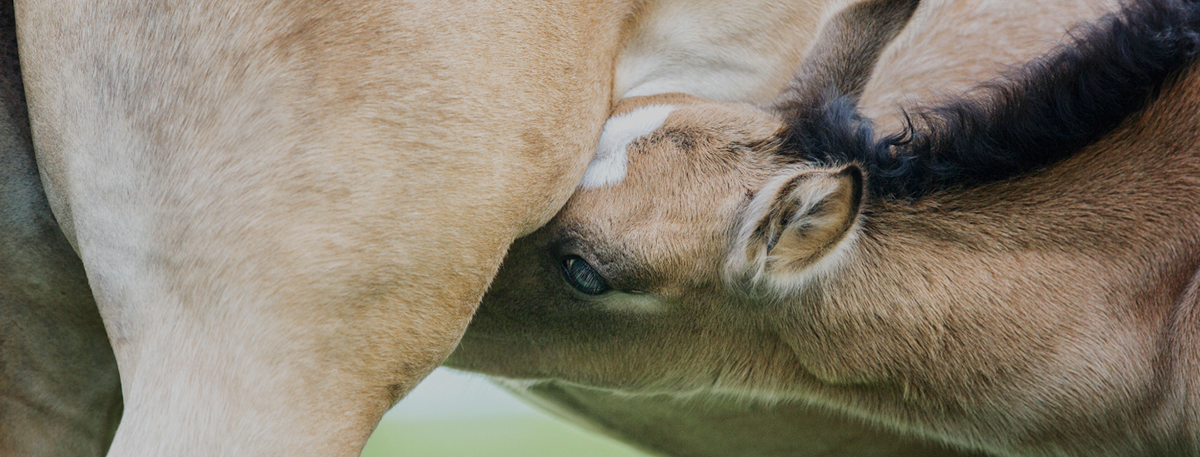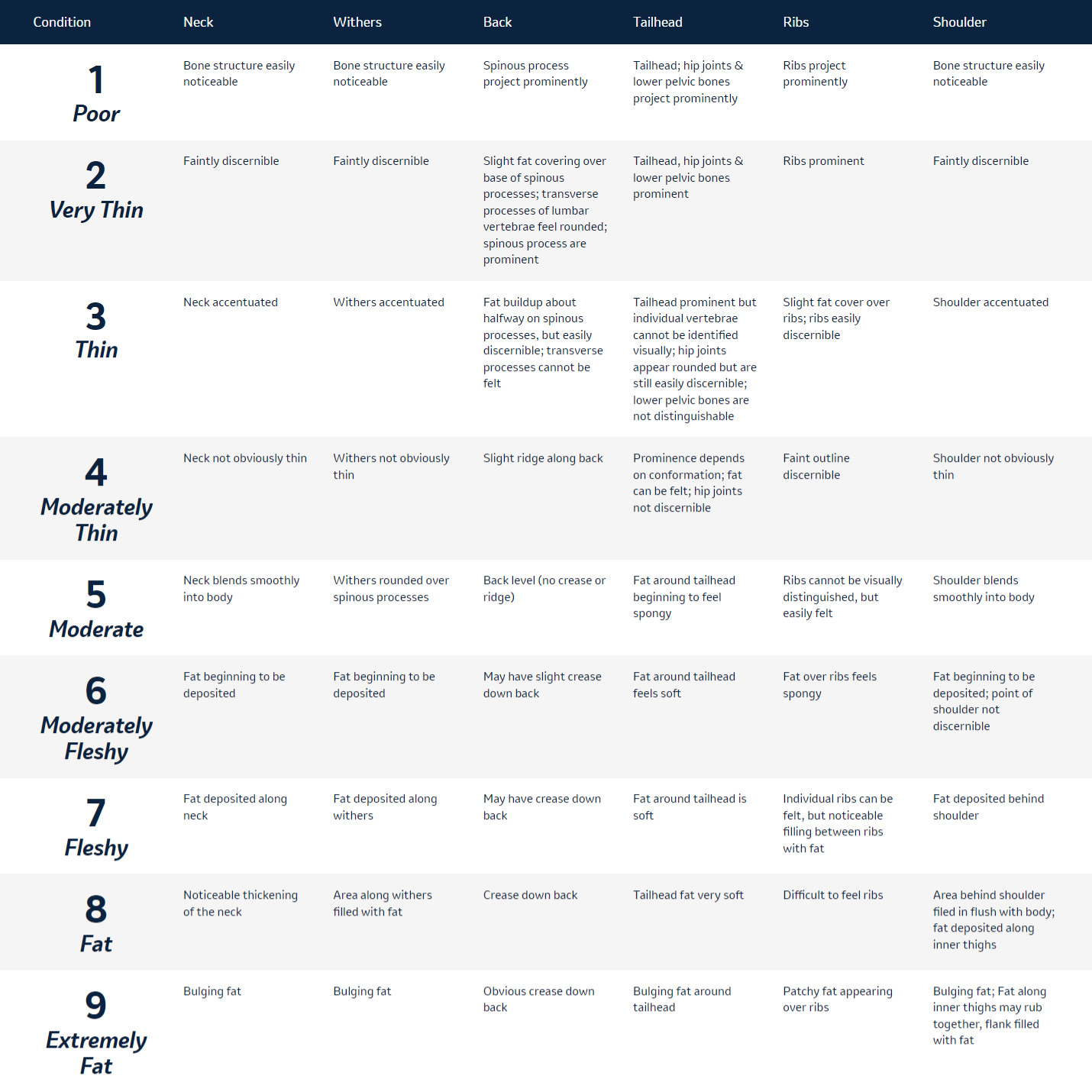
Foal Care
Foal Nutrition and Growth
Foal Nutrition and Growth
Your healthy newborn foal should consume 15%-25% of his body weight in milk daily and gain an average of 1-3 pounds per day. Your foal may nurse 70 to 80 times per day.
Excessive weight gain, unusually rapid growth spurts or a diet unbalanced in calories, protein, calcium, phosphorus and trace minerals may place your foal at increased risk for metabolic bone disease. Developmental, or metabolic bone disease includes conditions such as physitis, contracted tendons and defects in bone ossification (e.g., OCD, subchondral bone cysts, wobbler syndrome).
As your foal grows, he will need a gradual transition from an all-milk diet to solid feed. Typically, creep feed should be introduced slowly within the first month of life at the rate of 1 pound of creep feed per month of age. The type of feed offered will depend on the amount and quality of hay and/or pasture in the diet but should be designed to meet the nutritional needs of suckling foals.
Consult with your veterinarian to develop a balanced nutrition program for your foal.
Nutrition from 4-6 weeks of age to weaning
By the time your foal is 4 to 6 weeks of age, you should be providing appropriate creep feed. You can feed your foal individually (preferred) or add to your mare’s feed if they are fed together. Divide the feed into two to three meals per day, and feed no more than a 0.5 pound of feed per 100 pounds of body weight in one meal.
When your foal reaches about 2 months of age, his nutrient requirements for growth exceed that provided by the mare’s milk alone. This is why proper creep feeding at this time is important to sustaining optimal, steady growth and development of the foal.
To choose a creep feed, look for one designed and labeled for use by suckling foals. The feed should contain a source of quality protein (usually 14 to 16 percent crude protein in order to provide adequate essential amino acids, including lysine, for growth); a source of digestible energy; and adequate amounts of minerals, including calcium, phosphorus, copper, zinc and selenium; and vitamins.
Adjust the feed intake to maintain a body condition score of 5 (range 1-9). Overweight foals, or those that experience rapid growth spurts, may be at an increased risk for developmental orthopedic diseases that include physitis, contracted tendons, club feet, osteochondrosis (OCD), acquired flexural deformities and cuboidal bone malformation.
Always provide access to fresh water and good quality pasture and/or hay. Offer a daily minimum of 1 pound of hay per 100 pounds of body weight for 300–400-pound foals.
Once your foal is weaned, his ideal body condition score is 5 to 6. Monitor your foal’s body condition frequently and adjust the diet accordingly. For foals that weigh between 500 and 1,000 pounds, offer a minimum of 1.2 pounds of hay per 100 pounds of body weight daily. Due to limitation in a young horse’s digestive capacity and ability to digest roughage, a maximum of two pounds of hay per 100 pounds of body weight is recommended.
If you have concerns about your weanling’s growth or nutrition, please contact your veterinarian and/or equine nutritionist.
Body Condition Scoring
You can use Body Condition Scoring, a system based on visual appraisal and body palpation of six areas, to assess the relative body fat of your mare and growing foal. The ideal body condition score for a foal is between 5 and 7. Consult your veterinarian if your foal’s body score is higher or lower. Monitor your foal for contracted tendons, physitis and other angular limb deformities.


Along the neck

Along the withers

Crease down back

Tailhead

Ribs

Behind the shoulders (elbow)
DESCRIPTION OF BODY CONDITION SCORES1

Your Foal’s Growth Stages
Your foal is changing faster than the blink of an eye. One day, he is all gangly and awkward; the next, he seems to have grown into his legs with grace. As exciting as it is to watch your foal transform, it’s also important to pay attention to key milestones along the way.
It’s easy to see why early care is so important to the long-term health of your foal. By the time he is six months old, your foal will have already attained about 80 percent of his mature height and half of his mature weight.
Small or newborn foals can be weighed on a bathroom scale. Weight tapes can be used to estimate the weight of older foals when scales are not available.
Of course, if you have concerns, call your veterinarian. Early intervention can be the key to long-term good health.
In a foal’s first two weeks
- First deciduous incisors (centrals) present at birth or by the first week
- First, second and third deciduous premolars erupt by two weeks
- Your foal should nurse six to 10 times per hour. Listlessness and decreasing nursing vigor are early signs of illness
- Make sure to monitor/reduce any hernias
Vital signs during the first two weeks
- >99 to 102 degrees Fahrenheit
- 70 to 80 heartbeats per minute
- 23 to 30 breaths per minute
Always obtain vital signs when your foal is quiet and resting since exercise and/or excitement can falsely elevate most values. If your foal’s vital signs are consistently abnormal, contact your veterinarian.
Most foals experience a bout of self-limiting diarrhea within the first two weeks of life, often called “foal heat” diarrhea. The cause is usually a change in the foal’s diet coupled with normal physiologic changes in the bacteria colonizing the foal’s intestines. If it persists or you are worried, contact your veterinarian.
Two Weeks to Two Months
Here are the most important physical changes to track in your foal between 2 weeks and 2 months of age.
- Testicles should have descended in most colts by this time
- Second deciduous incisors (intermediates) erupt at 4 to 6 weeks of age
Vital signs during the first two weeks to two months
- >99 to 102 degrees Fahrenheit
- 60 to 70 heartbeats per minute
- 20 to 30 breaths per minute
Two Months to Four Months
Physical Changes
- High incidence of respiratory disease and diarrhea in this age group
- Infectious causes are variable and may include a variety of bacteria, viruses and/or parasites
- Watch for skeletal malformations
Vital signs during two to four months
- >99 to 101.5 degrees Fahrenheit
- 60 to 70 heartbeats per minute
- 20 to 30 breaths per minute
Four to Six Months
Physical Changes
- Wolf teeth (first permanent premolars) erupt at 5 to 6 months of age
- All hernias (e.g., umbilical, inguinal) should have resolved
- All carpal deformities should be corrected by 6 months of age
- Weaning occurs for most foals
- Monitor for physitis and acquired angular deformities and other signs of developmental orthopedic diseases (DOD)
Vital signs during four to six months
- >99 to 101.5 degrees Fahrenheit
- 60 to 70 heartbeats per minute
- 20 to 30 breaths per minute
Six Months to One Year
Physical Changes
- At 6 months, most foals have reached 50 percent of mature weight and 80 percent of mature height
- Third deciduous incisors (corners) erupt at 6 to 9 months of age
- First molars (fourth cheek teeth) erupt between 9 and 12 months of age
- Make sure to separate fillies and colts in order to prevent pregnancies
Vital signs during six months to one year
- >99 to 101.5 degrees Fahrenheit
- 60 to 70 heartbeats per minute
- 20 to 30 breaths per minute
References
1. Henneke D.R., Potter G.D., Kreider J.L. and Yeats B.F. Relationship Between Condition Score, Physical Measurements and Body Fat Percentage in Mares, Equine Veterinary Journal (1983) 15 (4), 371-372
